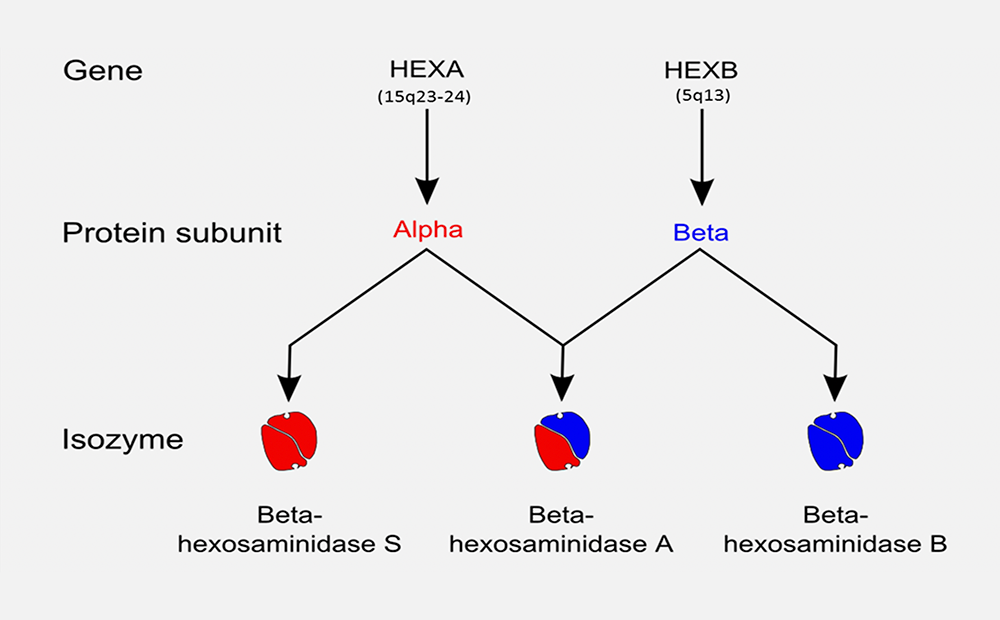Sandhoff Disease
An overview
Tay-Sachs and Sandhoff diseases are very similar.
Sandhoff disease is caused by a problem with the HEXB gene. This gene provides instructions to make a protein needed by two important enzymes. These enzymes are called beta-hexosaminidase A and beta-hexosaminidase B. These enzymes work closely together, and play important roles in breaking down gangliosides, including GM2 gangliosides in the brain and spinal cord.
Without these enzymes, the waste products build up and cause damage to brain and spinal cord cells (neurons or nerve cells). This causes the cells to malfunction and die.
The science
Sandhoff disease is caused by certain disease-causing changes in the HEXB gene. The HEXB gene is responsible for providing instructions for making a protein crucial to the enzymes beta-hexosaminidase A and beta-hexosaminidase B.
The enzymes beta-hexosaminidase A and beta-hexosaminidase B work together in nerve cells to break down GM2 ganglioside and related compounds.
As a result of the faulty HEXB gene, the enzymes beta-hexosaminidase A and beta-hexosaminidase B do not function optimally without the crucial protein. The large GM2 strands cannot be fully broken down. Instead, GM2 remains stored in the cells of the brain. Over time, this causes the cells to malfunction and eventually die

